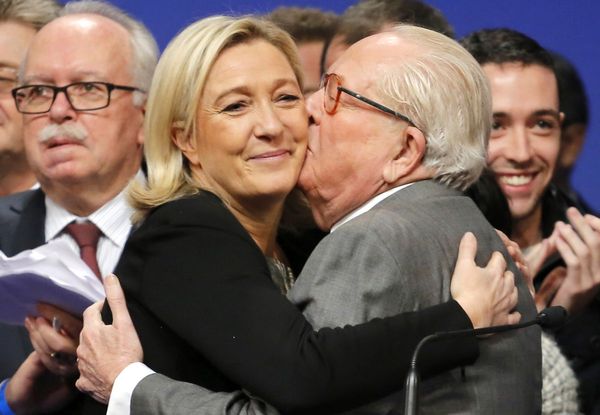Translated by Brian Hioe
As something like a magical spell in Taiwanese politics at this point, the “1992 Consensus” emphasizes on the existence of “One China” but each side of the Taiwan-China straits has “respective interpretations” of what it means. Individuals from all walks of life have fought over the meaning of the “1992 Consensus.”
To clarify what the “1992 Consensus” means and whether this notion helps or hurts Taiwan’s future, we shall begin by unpacking the origin of the 1992 Consensus, and determine whether such consensus even exists.
The historical reality of the 1992 talks
The “1992 talks” consisted of two talks, both of which took place in Hong Kong. They were meant to discuss “practical matters” regarding document verification and registered mail services between Taiwan and China.
These two talks took place in March and October respectively. During the second talk, which is what we normally refer to when we talk about the “1992 talks,” Taiwan was represented by Xu Hui-you (許惠祐), then-chairperson of Taiwan’s Straits Exchange Foundation (SEF); and China was represented by Zhou Ning (周寧) from the advisory board of China’s Association for Relations Across the Taiwan Strait (ARATS).

No consensus: What Beijing wanted was “One China”
Did the representatives ever reach a consensus? No.
The clearest proof showing a consensus was never reached is that, the two sides were unable to resolve their differences, so China’s representative, Zhou Ning, returned to Beijing from Hong Kong to ask for further instructions. But Zhou did not come back and the Taiwanese delegation returned to Taiwan a week later.
If the two sides had reached an agreement, they would have signed an agreement of consensus, providing clear legal and historical proof of the 1992 Consensus. This would all be very self-apparent and there would be no need to argue about anything that came after.
What China kept pushing for during the talks was that Taiwan’s SEF should announce that “We affirm the principle that there is only one China across both sides of the strait.” Of course, no consensus was reached on that issue, and the SEF’s Xu Hui-you did not have any further discussion with Zhou Ning after the unproductive talk.
In other words, from 1992 until the present, the Chinese Communist Party (CCP) has continually maintained the attitude that there is only one China and that any deviation is unacceptable. Thus, the notion of “one country” has been a continual refrain for the CCP over the past two decades.
An invented term
The “1992 Consensus” is a term invented after the 1992 talks by Su Chi (蘇起), a Kuomintang (KMT) politician and the former minister of Taiwan’s Mainland Affairs Council.
Due to this falsification, whether or not there was a 1992 Consensus subsequently became a source of political contestation regarding shifts in cross-strait relations. By now, it has become something that both the CCP and KMT claim to have happened.
Through several successive Taiwanese presidents, both the CCP and KMT have used the 1992 Consensus as a wedge issue against the advocates of Taiwanese independence.
The “triangular dynamics” between the United States, China, and Taiwan
Again, no documents proved that the 1992 Consensus happened and the bilateral talks were inconclusive.
Political scientist Lowell Dittmer has once proposed the notion of a “triangular dynamics” between the United States, China, and the Soviet Union. This model could also be used to describe relations between the U.S., China, and Taiwan from 1992 onward as well. What was the effect of these triangular dynamics on Taiwan, then, in 1992?
The Hong Kong talks took place right around the time of the U.S. presidential elections. George Bush Sr. needed to approve the arms sales in order to show that he had created jobs and improved the American economy as a way of boosting his approval rating.
At the time, the “Peaceful Pearl Plan,” which provided U.S. military and technology assistance to China, had also just concluded. In other words, China was not yet competing with the U.S. for military supremacy the way it is today. China also did not keep chanting the 1992 Consensus “magic spell” until years later. Beijing was biding its time and hiding its strengths, whereas today we find that U.S.-China relations have been upturned by the ongoing trade war under Donald Trump.

The 1992 Consensus as a political totem and a precondition for negotiations
After Su Chi invented the term 1992 Consensus, it has become a political totem to advance cross-strait relations, as well as a precondition for establishing contact with China.
It is almost as if there were no 1992 Consensus, Beijing would not even respond to an email. When China imposed a tourism ban and suppressed Taiwan diplomatically, the deep-blue and deep-red politicians in Taiwan would keep framing it as a result of refusing to acknowledge the 1992 Consensus.
Insofar as the 1992 Consensus is used as a means of threatening us, is there no way we can beat them at their own game?
Former President Chen Shui-bian (陳水扁) actually tried to turn the tables before. During his 2004 National Day speech, Chen made a ten-point statement in which he emphasized “returning to the foundation of the 1992 talks in Hong Kong.” In seemingly accepting the spirit of the 1992 Consensus, Chen was indicating a flexible attitude toward cross-strait relations and showing sincerity in negotiating for an alternative path.
Current President Tsai Ing-wen (蔡英文) also recognized “the historical facts of the 1992 talks” during her inauguration speech, but reiterated that she would not allow Beijing’s viewpoint to dominate.
The downturn in cross-strait relations, then, never rested in any “keyword” or the attitude of the Taiwanese government, but in the Chinese government’s relentless ambition in annexing Taiwan.
Why would the 1992 Consensus harm Taiwan? It stems from all the other “cross-strait formulas” that would come along with the acceptance of the 1992 Consensus, such as the notion of a cross-straits peace agreement or “one country, two systems.” If Taiwan accepted any of these formulas, our decades of progress toward freedom, democracy, human rights, and rule of law would disappear in a flash, as subsumed into the “China model.”
The connection between “one country, two systems” and the “1992 Consensus”
Chinese President Xi Jinping (習近平) does not avoid linking the 1992 Consensus with the “one country, two systems” model. Shrugging off the self-evident failure of such model in Hong Kong, Xi has sought to use the 1992 Consensus as a starting point to apply a similar model but “tailored” to Taiwan.
On the other hand, the pan-Blue camp has desperately sought to draw a distinction between the 1992 Consensus and “one country, two systems.” They have continually emphasized the aspect of “respective interpretations” in the nonexistent 1992 Consensus, believing that this claim alone will preserve the existence of the Republic of China and that this is sufficient to distinguish the country from China.
Why is all this harmful to Taiwan? As we’ve understood above, there was never any 1992 Consensus or any “respective interpretations” element as the KMT imagined. The pan-Blue camp has only used the 1992 Consensus as a pretext to push for unification — and this attempt is not just about the leaning of a political identity or a nationalist sentiment, it pulls Taiwan into a completely different realm of values. If Taiwan was ever annexed by the CCP, it is not a reversible outcome. Who knows if we would be the next Xinjiang?
The sense of “national doom” that we talk about nowadays is deeply related with the 1992 Consensus and Xi Jinping’s obsession with “one country, two systems.” We must carefully observe that a unification trap has been set up for us both internally and externally. Under these threats to our existence, it’s only natural and appropriate for Taiwanese to feel a sense of doom before the 2020 elections.
READ NEXT: Could a Taiwanese President Commit Treason and Get Away With It?
TNL Editor: Daphne K. Lee (@thenewslensintl)
Read the original article in Chinese here. If you enjoyed this article and want to receive more story updates in your news feed, please be sure to follow our Facebook.







